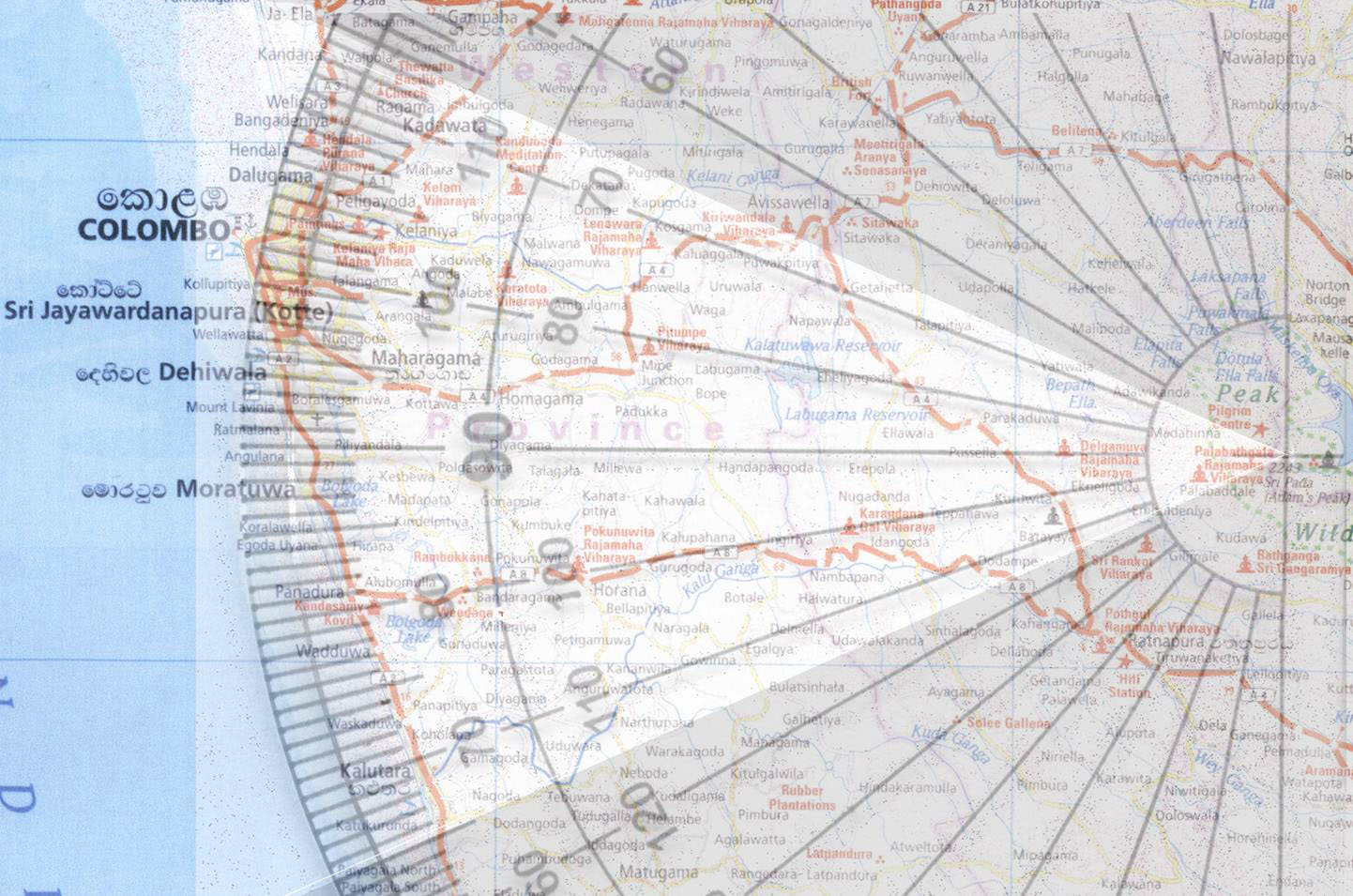
The Sripada Peak with a height of 2.2 km is about 70 km from Mount Lavinia and therefore seen at an altitude of about 1.8 degrees above the horizon. From Colombo the Mountain covers a region just smaller than the half a degree or apparent diameter of the Sun.
The range in direction your depends on Geographical latitude. From Colombo, Sri Lanka, which 6.9 degrees North, the Sun rises an extreme 24.6 degree south of East around December 21st, that is known as the Winter Solstice. From this southern extreme, the location of Sunrise moves north each day, rising closest towards east on March 21st, around which time the direction of Sunrise moves north by about 0.4 degrees each day. It rises an extreme 22.4 degrees North of East around June 21st that is known as the Summer Solstice and starts moving South. When it rises exactly East around March 21st and September 21st that time is known as the Equinoxes.
So on two days of each year from any particular location from Kandana to Kalutara, you can see the silhouette of the Sripada mountain against the Sun at Sunrise, if it is not cloudy towards the eastern horizon. Weather which limits the Sripada season from December to May, makes this the best period to have reasonable chance of clear view of the sun rise behind Sripada as well.

Although the GPS on your phone and Google Maps gives location, I found slight differences between systems could cause small errors in the computation of Azimuth, which are however significant with respect to the accuracy required. An error of 0.16 degrees made a Sunrise which I thought would be central in 2023 to be on the side. I found that such errors could be avoided by using the same website to determine latitude & longitude coordinates of Sripada and observing location as used to compute Azimuth of Sunrise.
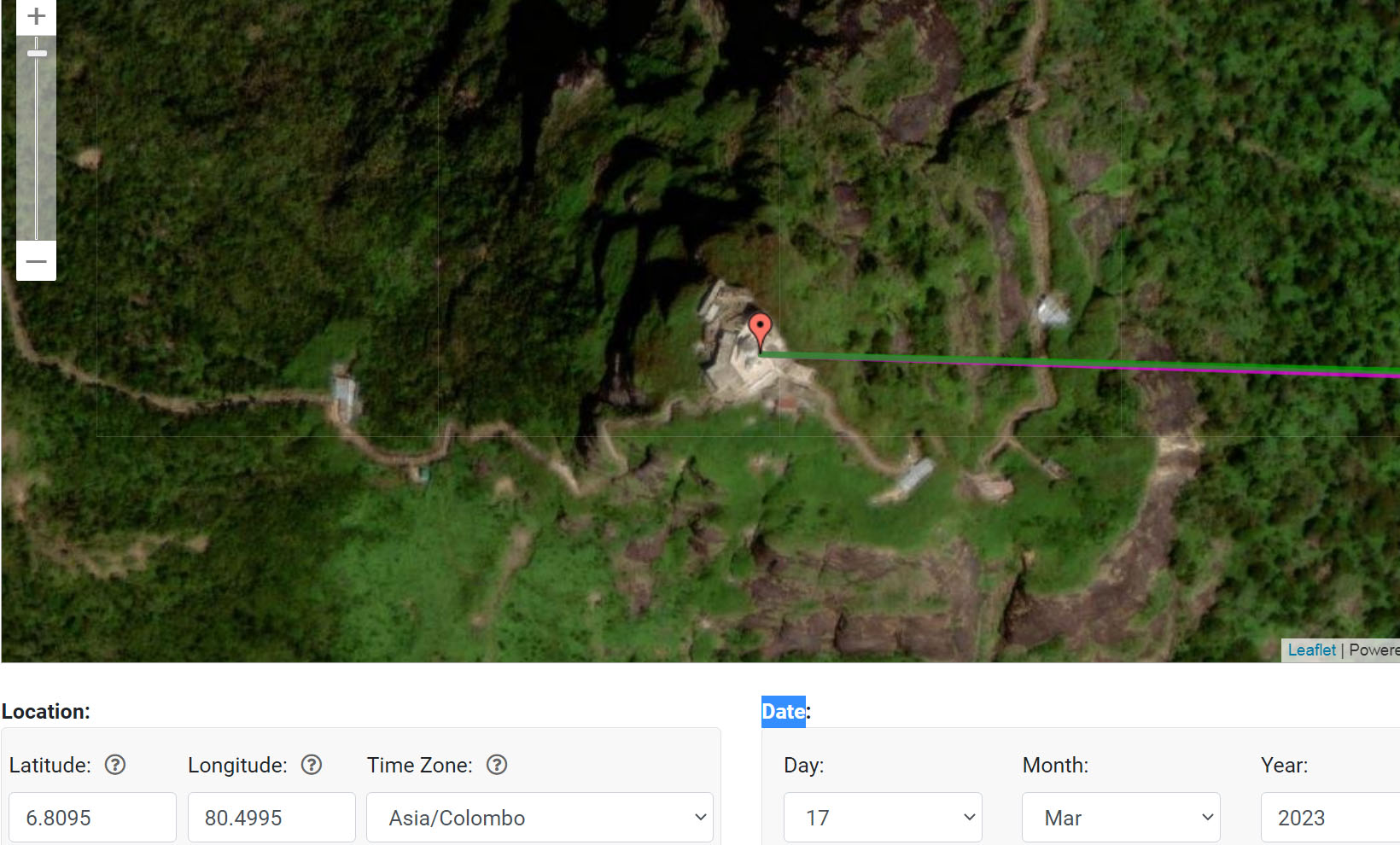
Go to website
https://www.esrl.noaa.gov/gmd/grad/solcalc/
and drop the red marker at your observation location using Satellite View.
This then displays latitude/longitude on the web-page as shown for
Sripada on image above. These coordinates of Sripada have been
encoded in web page to compute azimuth
to Sripada from your location of observation.
Then close the expected date, compute azimuth to the Sun 7 minutes
after Sunrise, when center of Sun is about 1.8 degrees above the
horizon. Change date and find date when Sun is within 0.24 degrees
from your computed azimuth to Sripada from your location of
observation. A rough idea of date of Sunrise behind Sripada from
February to April is given for selected
locations in Colombo.
Sunrise is given when the center of the Sun is on horizon. You see the Sun about a minute before the top of the Sun is at the height of peak or about 5 mins after Sunrise. The event lasts about 3 mins.
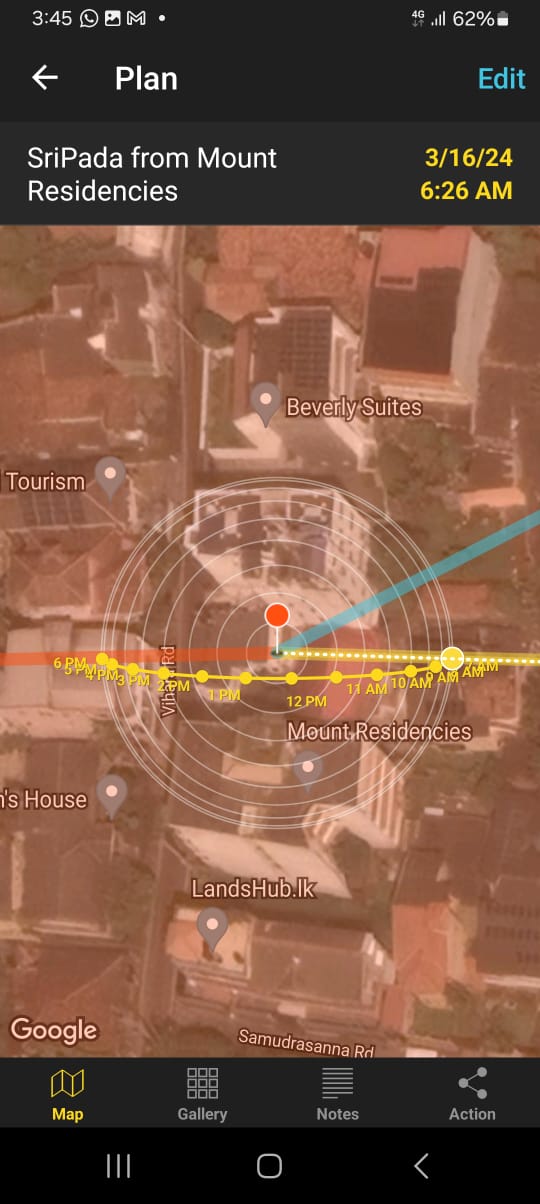
| 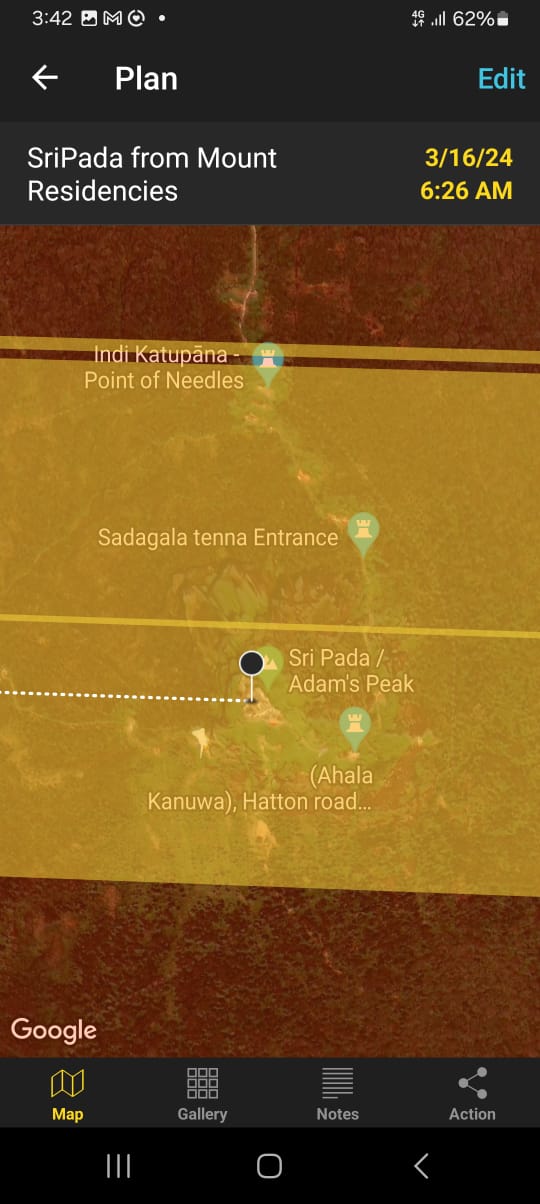
| 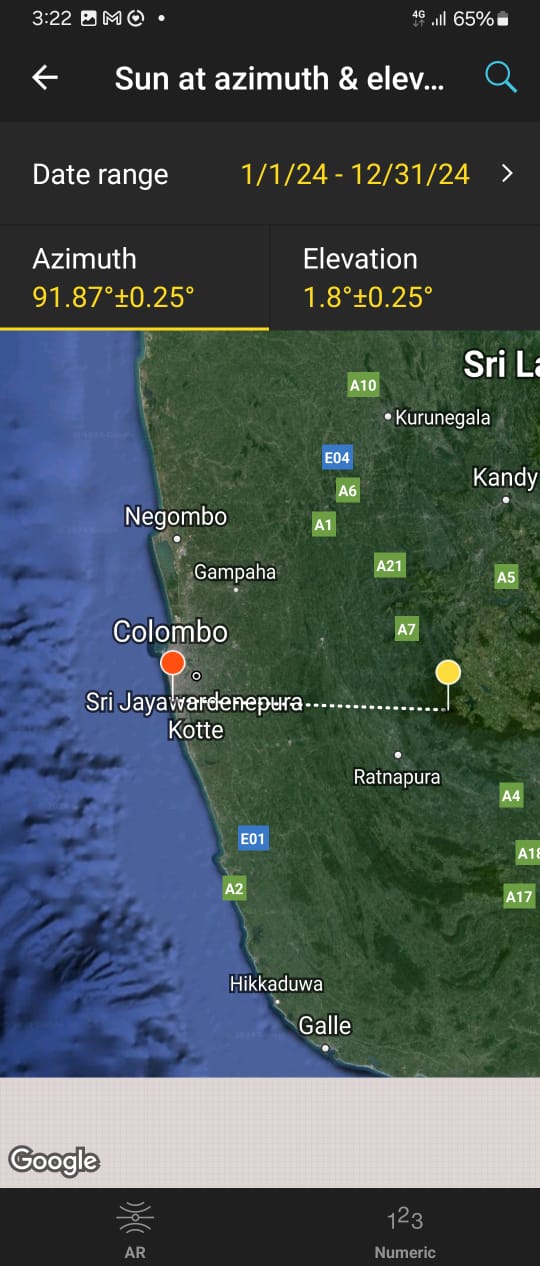
| 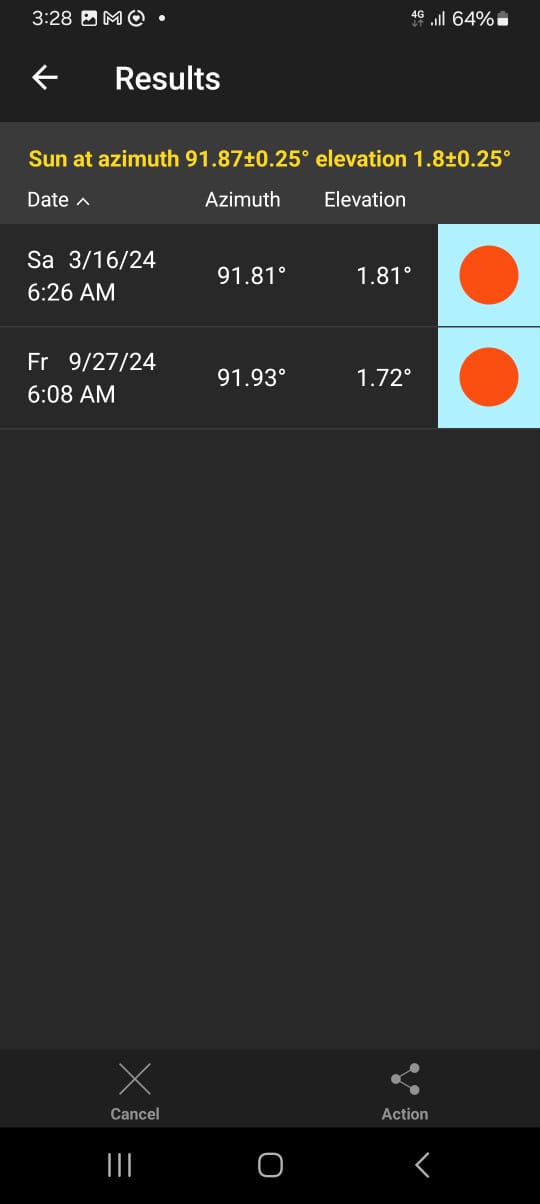
|
| PhotoPills Screens and output | |||
It has two markers that are movable on a Google Earth map. A black marker has to be put on SriPada. Put the Red marker at the position from where observations are made. Set an altitude of 1.8 degrees and set a range of +/- 0.25 degrees on both Azimuth and Elevation. It then computes the Azimuth to the Black Marker from the Red Marker. Then you can get PhotoPills to find all the dates and times the Sun (or the Moon) will be within that range of Azimuth and Elevation, over the selected range of future dates.
Conditions ideal for Photographing Sunrise behind Sripada
As always, Never try to observe or photograph the Sun without proper filters, when it is more than about 2 degrees above the horizon, as there is then insufficient atmospheric extinction.
In US I had purchased a Sony Mavica FD97 SLR 2.1MP digital camera with a good Macro to take images of coins. After a few attempts found it took too long. I had also hoped I could attach it to a Telescope, but only after I purchased it did I discover that the lens could not be removed like in a normal SLR camera. So this digital camera sat idle like most expensive toys. It had now become very useful to photograph the Sun since it had 10X optical zoom and steady shot. It was also used to photograph the 2010 January 15th Annular Eclipse.
In 2009 the Sony FDMAVICA was replaced with a Olympus FE5010,X915 (30x Optical Zoom) gifted by my Son with which I took the 2010 photograph. I lost it at a Royal Thomian match in 2012 and the 2013 shots were taken with Panasonic DMC LZ20 (21x Optical Zoom). This broke after being dropped at Yellowstone National park on my trip to USA to see the 2017 Total Eclipse of the Sun and was replaced with a Canon PowerShot SX620 HS (25x Optical Zoom) with which I have taken the subsequent videos in 2018. 2021, and 2023.
For an introduction and more images from my quest to photograph Sunrise behind Sripada from Mount Lavinia please read article and view